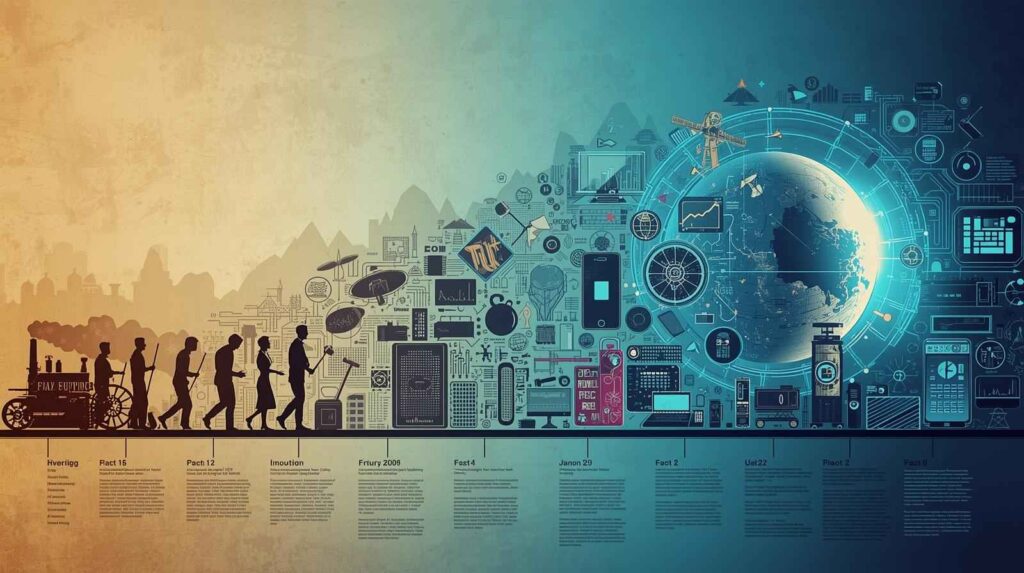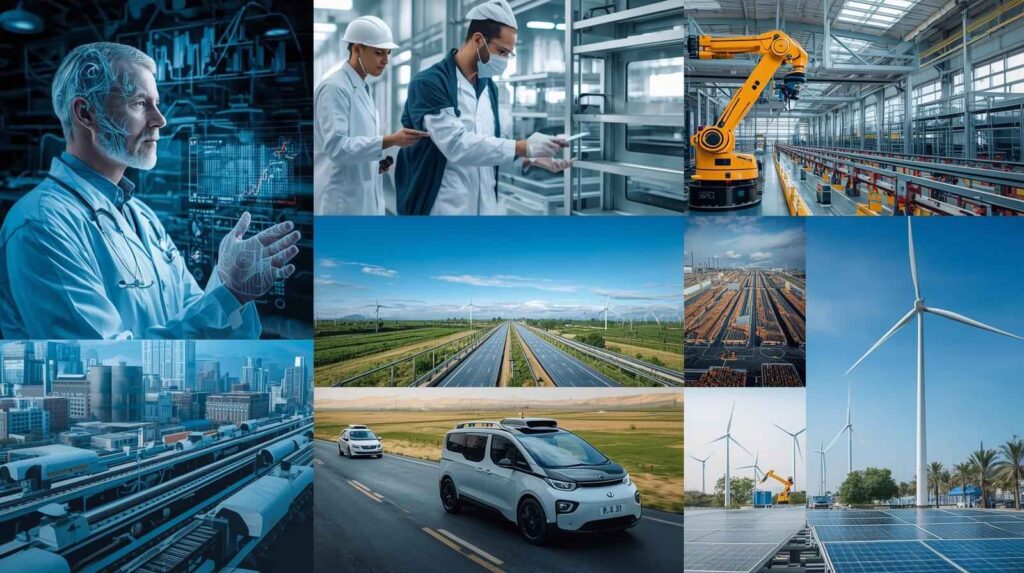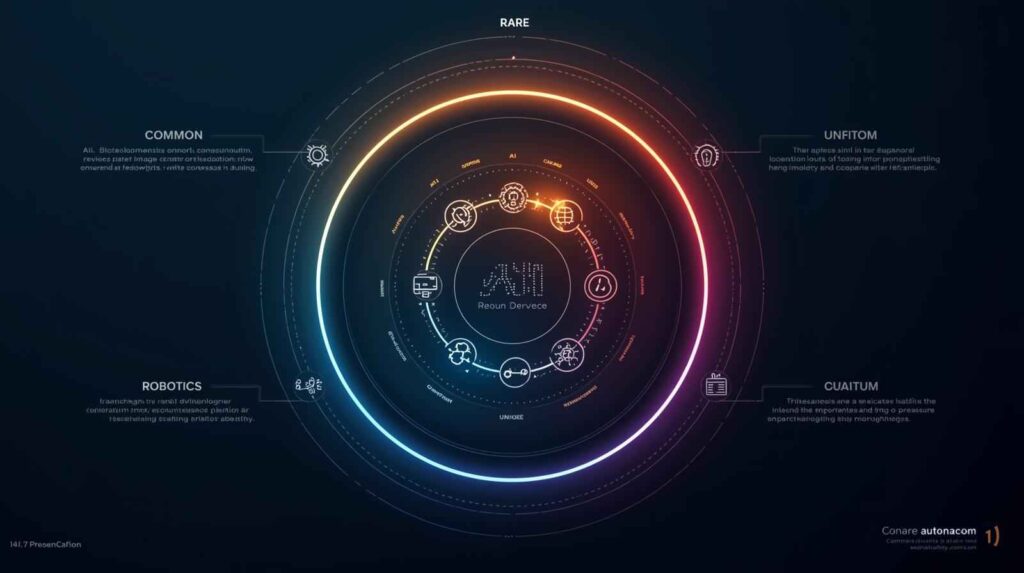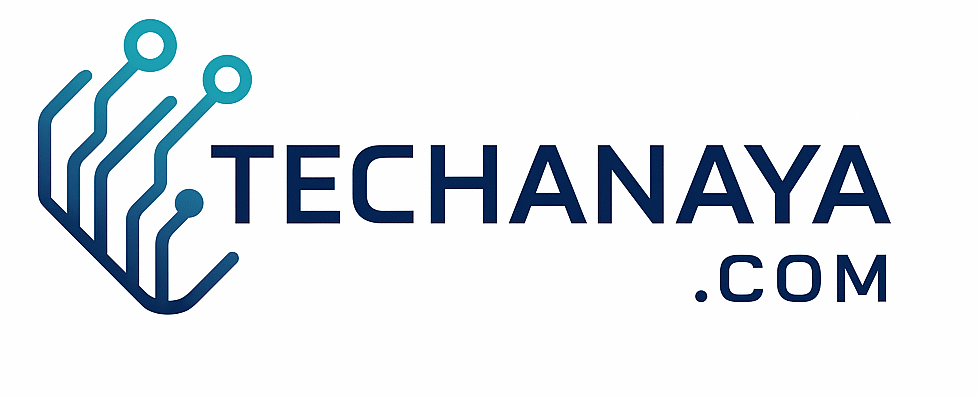Leading-Edge Technology: Redefining the Future of Innovation
Technology moves at a speed that often feels faster than we can keep up with. Every few years, or sometimes months, a breakthrough emerges that transforms how we live, work, and even think. Leading-edge technology represents that exact frontier: the point where innovation meets real-world impact. From artificial intelligence to quantum computing, this cutting-edge evolution shapes industries, economies, and the very fabric of daily life.
I remember the first time I saw an early prototype of a self-driving car. It wasn’t perfect, far from it, but watching that vehicle navigate an empty parking lot on its own felt like witnessing the future in real time. Moments like that remind me why I’ve always been fascinated by technological progress: it’s unpredictable, daring, and endlessly creative.
In this blog, you’ll discover what makes leading-edge technology different from everyday innovations. We’ll look at its defining traits, explore how it’s influencing industries, and discuss the opportunities and challenges it brings. Whether you’re an entrepreneur, a student, or simply someone who loves staying ahead of the curve, there’s something here that will change how you see the digital world.
So, let’s dive in and unpack the ideas shaping tomorrow, today.

What Is Leading-Edge Technology?
Leading-edge technology refers to the most advanced and innovative tools, systems, or processes currently available. It’s not about technology that will exist someday; it’s what’s being developed, tested, or adopted right now that pushes boundaries beyond the mainstream. Think of it as the sharpest edge of innovation, the space where science, creativity, and imagination collide.
This type of technology often sets the stage for future standards. For instance, AI-driven analytics in medicine, blockchain in finance, and quantum encryption in cybersecurity all began as “leading-edge” concepts before becoming foundational tools.
The phrase also implies constant movement. What’s leading-edge today may become outdated tomorrow. The continuous cycle of discovery and replacement defines the modern tech era.

The Evolution and Etymology of Innovation
The term “leading-edge” originally came from aeronautics, describing the forwardmost point of an airplane wing, the part that meets the air first. That image perfectly fits technology: always facing resistance, cutting through limitations, and driving progress forward.
Historically, every industrial revolution has had its own version of leading-edge innovation.
- The First Industrial Revolution introduced mechanization.
- The Second brought electricity and mass production.
- The Third revolved around computing and automation.
- Today’s Fourth Industrial Revolution, often called Industry 4.0, fuses digital, biological, and physical systems.
In short, leading-edge technology represents the current wave of transformative tools shaping society’s next chapter.

Understanding the Linguistic and Conceptual Aspects
Semantically relevant terms: advanced technology, innovation frontier, state-of-the-art systems, breakthrough science.
Lexical connections: progress, transformation, invention, digital evolution.
Polysemy: “leading-edge” can describe both physical precision (in engineering) and metaphorical advancement (in innovation).
Conceptually, leading-edge technology combines three layers:
- Scientific Foundation – rooted in research and experimentation.
- Engineering Execution – converting theory into functional systems.
- Social Integration – influencing everyday lives and economies.
Understanding these aspects is key to grasping why innovation thrives at intersections, not silos.

Exploring the Depth of Leading-Edge Technology
Hyponyms and Hypernyms
- Hyponyms (sub-categories): Artificial intelligence, nanotechnology, biotechnology, quantum computing, advanced robotics, augmented reality, renewable energy systems.
- Hypernyms (broader category): Emerging technology, innovation, digital transformation.
Holonyms and Meronyms
- Holonyms (the whole): The digital ecosystem that includes hardware, software, data, and connectivity.
- Meronyms (the parts): Algorithms, sensors, microchips, user interfaces, data networks.
Synonyms and Antonyms
- Synonyms: Cutting-edge, frontier technology, next-generation innovation.
- Antonyms: Outdated, obsolete, legacy systems.
By viewing technology through this lens, we can see how every advancement fits within a vast, interconnected hierarchy of progress.

Contextual and Semantic Associations
Collocations
Common phrases include “leading-edge innovation,” “leading-edge research,” and “leading-edge design.” These combinations evoke progressiveness and authority.
Connotations
The phrase often carries emotions of excitement, ambition, and sophistication. It signals leadership and competitive advantage.
Semantically Related Entities
Key entities connected to this concept include Silicon Valley startups, global research institutions, venture capital firms, and government innovation programs.
These associations make “leading-edge technology” not just a technical phrase but also a symbol of ambition and transformation.

Attributes and Characteristics
Common Attributes
- Grounded in research and experimentation
- Focused on problem-solving and disruption
- High investment risk but potentially massive reward
- Cross-disciplinary collaboration between scientists, engineers, and designers
Rare Attributes
- Integration of ethical design principles during early development
- Sustainability-first engineering, considering long-term impact before market entry
Unique Attributes
- Real-time evolution: technologies that update and adapt themselves (e.g., machine learning algorithms)
- Predictive intelligence: systems that anticipate needs before users articulate them
These qualities distinguish leading-edge technology from mainstream innovation, it’s not just advanced; it’s transformative.

Practical Applications and Use Cases
1. Artificial Intelligence and Automation
AI represents one of the most visible examples of leading-edge technology. From predictive healthcare analytics to autonomous vehicles, AI algorithms learn from data to make decisions faster and more accurately than humans.
Healthcare providers now use AI for early disease detection, while logistics companies optimize delivery routes in real time. Even creative fields like art and music are being reshaped by generative AI models.
2. Quantum Computing
Still in its infancy, quantum computing aims to solve problems traditional computers can’t, ike molecular simulations for drug discovery or cryptographic security for national defense. Companies like IBM and Google are investing billions to make quantum systems commercially viable.
3. Biotechnology and Genetic Engineering
The merger of biology and technology has opened possibilities once limited to science fiction. CRISPR gene editing, synthetic biology, and bioinformatics are redefining medicine, agriculture, and environmental science.
4. Renewable and Sustainable Tech
Leading-edge doesn’t always mean digital. Solar innovation, hydrogen fuel cells, and carbon-capture systems represent crucial steps toward sustainable industry. The drive for eco-friendly energy sources is both a moral and economic imperative.
5. Advanced Manufacturing and 3D Printing
Manufacturing is experiencing a renaissance through additive processes and smart factories. 3D printing enables rapid prototyping, customized production, and reduced waste, ideal for aerospace, healthcare, and automotive industries.
6. Extended Reality (XR)
From virtual reality (VR) to augmented reality (AR), immersive technology is changing education, entertainment, and design. For instance, architects can now “walk through” virtual models before construction begins.
7. Cybersecurity and Blockchain
As systems become smarter, so do cyber threats. Blockchain and encryption technologies now underpin everything from financial transactions to identity management, offering decentralized security models that resist tampering.

Common, Rare, and Unique Attributes Across Industries
Common Attributes:
- Data-driven decision-making
- Automation of manual processes
- Integration of artificial intelligence
Rare Attributes:
- Use of quantum-level computation for optimization
- Self-healing or self-correcting software systems
Unique Attributes:
- Fusion of human creativity with AI-generated content
- Cross-industry hybrid technologies like bio-robotics and neuro-interfaces
These traits show how innovation doesn’t live in isolation, it’s a network of progress.

The Broader Meaning of Leading-Edge Innovation
Beyond hardware and software, leading-edge technology represents a cultural shift. It redefines how society perceives progress, ethics, and human potential.
For example, discussions about AI ethics or digital privacy are no longer academic, they’re urgent. The decisions we make today about innovation will influence generations to come.
This broader meaning also includes the democratization of technology. Tools once accessible only to researchers or billion-dollar corporations are now available to startups, students, and individual creators. That accessibility fuels even faster cycles of discovery.

Challenges and Considerations
Every leap forward comes with friction. Leading-edge technologies introduce several challenges that require balance and foresight:
- Ethical Concerns – Issues like bias in AI, data misuse, and digital surveillance threaten privacy and fairness.
- Economic Disruption – Automation can lead to workforce displacement before new industries absorb the change.
- Security Risks – More connectivity means greater vulnerability to cyberattacks.
- Sustainability – High-energy systems such as data centers can strain environmental resources.
- Regulatory Lag – Innovation often outpaces policy, leaving legal gray areas that delay adoption.
Addressing these requires collaboration between technologists, policymakers, and the public. Progress without responsibility isn’t true innovation, it’s risk disguised as advancement.

Future Trends and Emerging Directions
The next decade will likely see convergence among technologies rather than isolated progress. A few trends to watch:
- AI + Quantum Fusion: Combining machine learning with quantum computing for unprecedented data analysis speed.
- Neurotechnology: Direct brain-computer interfaces enabling seamless interaction between human thought and digital systems.
- Green Tech Revolution: Climate-driven innovation prioritizing renewable materials and circular economies.
- Edge Computing and 6G Networks: Bringing computing power closer to data sources to reduce latency and energy use.
- Ethical AI Frameworks: Integrating moral reasoning algorithms into intelligent systems to ensure responsible automation.
The direction of progress will depend on how humanity balances ambition with accountability.

Frequently Asked Questions
1. What defines leading-edge technology?
Leading-edge technology refers to the most advanced, innovative, and experimental technologies currently in use or development. It focuses on pushing limits in performance, efficiency, or functionality beyond mainstream tools.
2. How does leading-edge technology differ from emerging technology?
Emerging technology may still be theoretical or early-stage, while leading-edge technology is actively shaping industries or undergoing real-world implementation. It’s the “working prototype” of innovation.
3. Which industries benefit most from leading-edge advancements?
Healthcare, finance, manufacturing, education, and energy sectors are among the biggest beneficiaries. Each uses innovation to increase efficiency, reduce costs, and create new business models.
4. What are the biggest risks of adopting leading-edge technology?
High development costs, cybersecurity threats, ethical challenges, and uncertain ROI. Early adoption can bring rewards, but also volatility.
5. How can businesses stay competitive in a leading-edge environment?
By investing in R&D, encouraging innovation culture, partnering with tech pioneers, and prioritizing continuous learning. Adaptability is the new competitive advantage.
6. What role does government play in leading-edge technology?
Governments provide funding, regulation, and infrastructure. They also set ethical and safety standards, ensuring technology serves society’s long-term interests.

Conclusion
Leading-edge technology is more than a buzzword, it’s a mindset. It represents humanity’s constant push to expand possibilities and solve the impossible. From the first programmable computer to today’s quantum machines, progress has always been driven by curiosity, courage, and creativity.
In my opinion, the real magic of innovation isn’t just in new gadgets or faster processors; it’s in the way these tools amplify human potential. They help us think bigger, work smarter, and connect deeper.
As we look toward the future, one truth remains constant: technology doesn’t define us, we define it. And as long as curiosity and ethics guide our ambition, leading-edge technology will continue to light the path forward, one breakthrough at a time.

